
Amira Benhima
A passionate advocate for holistic wellness and natural beauty, is an accomplished author specializing in the benefits and uses of Argan oil, with years of experience exploring its wonders.
Key Takeaways
Are you tired of struggling to find the perfect tree to plant in your garden? Look no further! Argania Spinosa Tree Planting Guides are here to save the day. These comprehensive guides provide you with all the necessary information to successfully cultivate argan trees, from seed to harvest. But that’s not all – they also reveal the incredible economic and environmental benefits of these unique trees. So, if you’re ready to transform your garden into a thriving oasis and discover the secrets of this valuable tree species, keep reading to uncover the secrets hidden within these guides.
- Select a planting location with well-drained soil and at least six hours of direct sunlight per day.
- Prepare the soil by loosening it to a depth of 12 inches, removing weeds and debris, and incorporating organic matter.
- Choose a healthy young tree with a strong central leader and plant it at the same depth as the root ball, spreading out the roots and ensuring firm packing of the soil.
- Monitor soil moisture levels and water accordingly, avoiding overwatering or underwatering, and use a balanced, slow-release fertilizer in early spring.
Choosing the Right Location
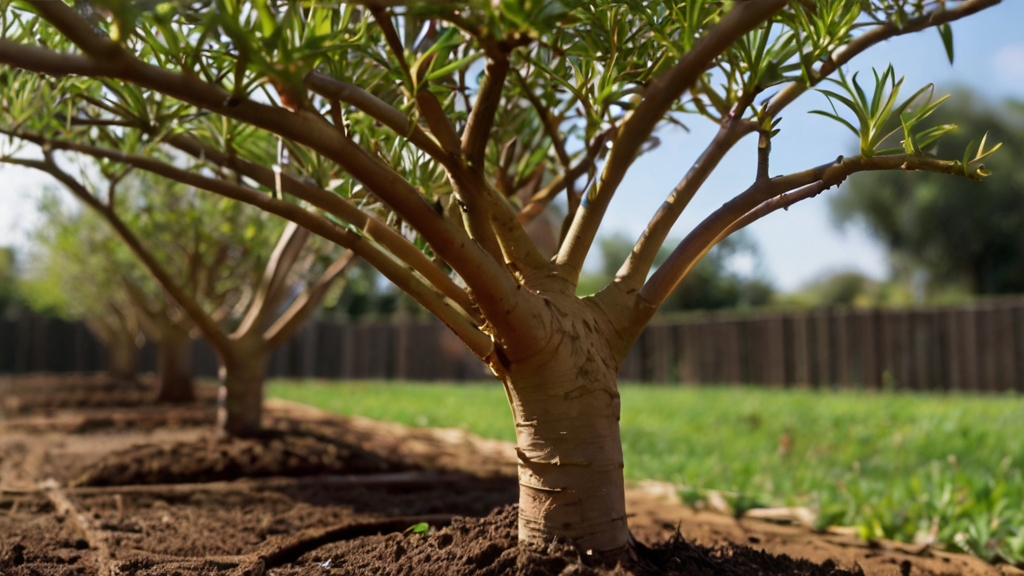
When choosing the right location for planting Argania Spinosa trees, it is important to consider the soil drainage and sunlight availability. Argan trees thrive in well-drained soil, so it is crucial to select a location that allows water to flow freely, preventing waterlogging. Avoid areas with heavy clay or compacted soil, as these can hinder proper drainage and lead to root rot. Sandy soil, on the other hand, should also be avoided, as it tends to drain too quickly and may not retain enough moisture for the trees to thrive.
Additionally, ample sunlight is essential for the growth and development of Argania Spinosa trees. These trees require full sun exposure, which means they should be planted in an area that receives at least six hours of direct sunlight per day. Keep in mind that nearby structures or trees may cast shadows, so choose a location where the trees won’t be shaded for an extended period.
When planting Argan trees, it is crucial to handle their delicate taproots with care. The taproot is responsible for anchoring the tree and absorbing water and nutrients from the soil. To avoid damaging the taproot, dig a hole that is wide and deep enough to accommodate it without bending or breaking. Gently spread the roots out in the hole and backfill with soil, ensuring that the tree is planted at the same depth as it was in the nursery container.
Preparing the Soil
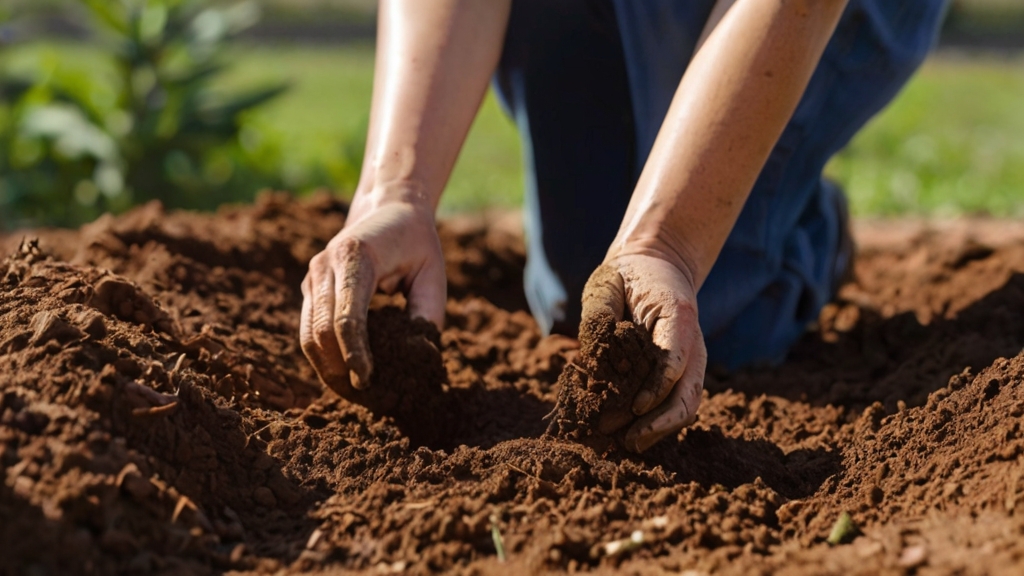
To properly prepare the soil for planting Argania Spinosa trees, begin by loosening the soil to a depth of 12 inches using a spade or tiller. This will help create a loose and well-aerated environment for the tree’s roots to establish and grow efficiently. After loosening the soil, it is important to remove any weeds, rocks, or debris that may hinder the growth of the tree. This ensures a clean planting area and reduces competition for nutrients and water.
Incorporating organic matter into the soil is another crucial step in preparing the soil. Organic matter, such as compost or well-rotted manure, improves the fertility and structure of the soil, providing essential nutrients for the tree’s growth. It also enhances water retention capacity, creating a favorable environment for the tree’s root system.
Before planting the Argania Spinosa trees, it is essential to test the soil pH and make necessary adjustments if needed. The optimal pH range for these trees is between 6.0 and 7.5. If the soil pH is too acidic or alkaline, it can affect the tree’s ability to absorb nutrients effectively. Adjusting the pH to the appropriate range ensures healthy growth and development.
Lastly, ensure that the soil is well-drained to prevent waterlogging. Poor drainage can lead to root rot and other issues that may harm the tree. If the soil has inadequate drainage, consider amending it with organic matter or creating raised beds to improve drainage.
By following these steps and properly preparing the soil, you are creating an ideal environment for the Argania Spinosa trees to thrive and flourish. Remember, it is crucial to serve the needs of the trees by providing them with the best soil conditions for optimal growth and health.
| Key Steps to Prepare the Soil |
|---|
| 1. Loosen the soil to a depth of 12 inches |
| 2. Remove weeds, rocks, and debris |
| 3. Incorporate organic matter |
| 4. Test and adjust soil pH |
| 5. Ensure proper drainage |
Selecting and Planting the Tree
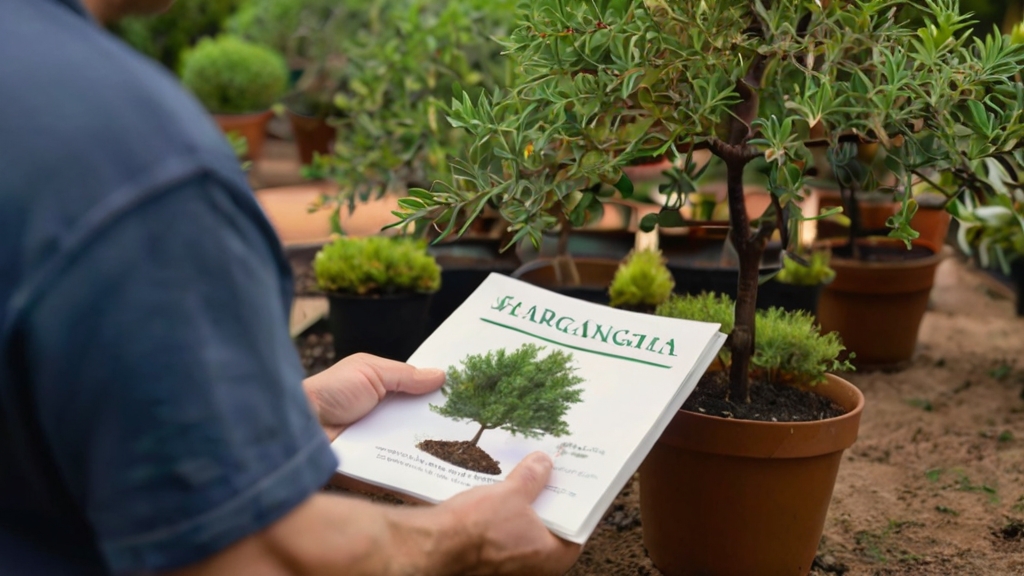
To successfully select and plant an Argania Spinosa tree, it is important to choose a healthy young tree with a strong central leader and well-distributed branches. Follow these guidelines to ensure a successful planting:
- Selecting the Tree: Look for a tree that appears vibrant and healthy. Check for signs of disease or pest infestation, such as discolored leaves or visible damage. The tree should have a strong central leader, which is the main trunk extending upwards, as well as well-distributed branches that are evenly spaced out along the trunk. Avoid trees with crossed or rubbing branches, as these can cause future issues.
- Choosing the Planting Location: Carefully consider the location where you will plant the tree. Argania Spinosa trees thrive in full sunlight, so choose a spot that receives at least six to eight hours of direct sunlight each day. Additionally, ensure that the soil in the planting area is well-draining. The tree will not tolerate standing water and requires soil that allows excess moisture to quickly drain away.
- Digging the Hole: Dig a hole that is twice as wide as the root ball of the tree and the same depth as the root ball. This will provide enough space for the roots to spread out and establish themselves. Ensure that the hole is deep enough so that the tree will be planted at the same depth it was in the nursery container.
- Planting the Tree: Gently place the tree in the hole, making sure that it stands straight. Spread out the roots in a natural, outward direction, taking care not to bend or twist them. Backfill the hole with soil, ensuring that it is packed firmly around the roots. Water the tree thoroughly, allowing the water to penetrate deep into the soil. This will help settle the soil and remove any air pockets.
Watering and Fertilizing Techniques
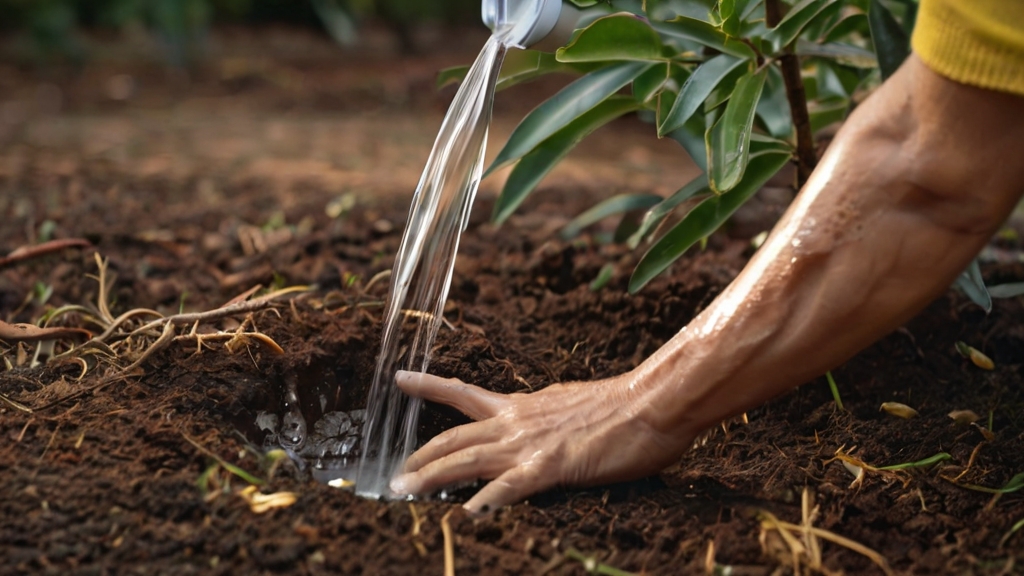
Watering and fertilizing techniques for Argania Spinosa trees are crucial for their health, growth, and fruit production. When it comes to watering, it is important to keep in mind that argan trees can survive with minimal water. However, if the soil is at risk of drying out, it is essential to provide them with adequate hydration, especially during the summer months. Insufficient water can lead to dormancy and no fruit production, so it is important to monitor the soil moisture levels and water accordingly.
One interesting fact about argan trees is that they are capable of tolerating irrigation with brackish water. This means that they can adapt to various water conditions, which is beneficial in regions where the water may not be of the highest quality. However, it is still important to ensure that the trees are not being overwatered or underwatered, as this can negatively impact their overall health and fruit production.
In terms of fertilizing, it is recommended to use a balanced, slow-release fertilizer in early spring. This will provide the necessary nutrients for the trees’ growth and fruit production. However, it is important to avoid over-fertilization, as this can lead to excessive vegetative growth at the expense of fruit production. Finding the right balance is key to ensuring that the trees receive the nutrients they need without compromising their ability to produce fruit.
Pruning and Maintenance Tips

To ensure the health and proper growth of your Argania Spinosa tree, it is important to follow proper pruning techniques. Regularly trim dead or diseased branches to maintain the tree’s overall health. Additionally, shaping the tree through selective pruning during the dormant season can help maintain its desired shape and structure. Remember to water the tree regularly, especially during its initial growth years, and consider using mulch to conserve soil moisture and promote healthy growth. If needed, seek professional assistance for more extensive pruning or maintenance needs.
Proper Pruning Techniques
Proper pruning techniques play a crucial role in maintaining the shape and overall health of the Argan tree. Follow these tips to ensure you are pruning your tree correctly:
- Remove dead or diseased branches during the dormant season: This promotes tree vitality and prevents the spread of diseases. Make clean cuts just outside the branch collar to aid in healing.
- Avoid over-pruning: Excessive pruning can stress the tree and reduce fruit production. Only remove branches that are necessary for the tree’s health and shape.
- Water and mulch regularly: After pruning, provide adequate water and apply mulch around the base of the tree. This helps the tree recover and promotes overall health.
- Seek professional guidance for major pruning: Consulting an arborist ensures the long-term well-being of your Argan tree.
Regular Watering Schedule
After ensuring you have properly pruned your Argan tree, the next crucial step in its maintenance is establishing a regular watering schedule. Proper watering is essential for the tree’s growth and overall health. Argan trees require consistent moisture, especially during the first few years of growth. To help you establish a regular watering schedule, refer to the table below:
| Season | Frequency | Amount of Water |
|---|---|---|
| Spring | Once every 7-10 days | 4-6 gallons per tree |
| Summer | Twice a week | 6-10 gallons per tree |
| Fall | Once every 10-14 days | 4-6 gallons per tree |
| Winter | Once every 3 weeks | 2-4 gallons per tree |
Remember to monitor soil moisture and adjust watering frequency accordingly. Mulching around the trees can also help conserve soil moisture and regulate temperature. Regularly inspect the trees for stress or disease and perform any necessary maintenance. By following a regular watering schedule, you can ensure the health and vitality of your Argan trees.
Pest Prevention Methods
Regular pruning and maintenance are crucial for preventing pests and maintaining the health and vitality of your Argania Spinosa tree. Here are some pruning and maintenance tips to help you keep your tree pest-free:
- Trim the tree regularly to maintain its shape and size. This promotes healthy growth and prevents overgrowth, which can attract pests.
- Remove dead or diseased branches through pruning. Doing so prevents the spread of pests and diseases within the tree, ensuring its overall health.
- Keep the growing environment clean and tidy. Clear away fallen leaves and debris, as they can harbor pests and provide hiding places.
- Inspect and maintain the tree regularly. Proper watering and mulching contribute to its health and pest resistance. Additionally, consider using organic pest control methods, such as neem oil, to prevent common pests without harming the tree or the environment.
Protecting Against Pests and Diseases
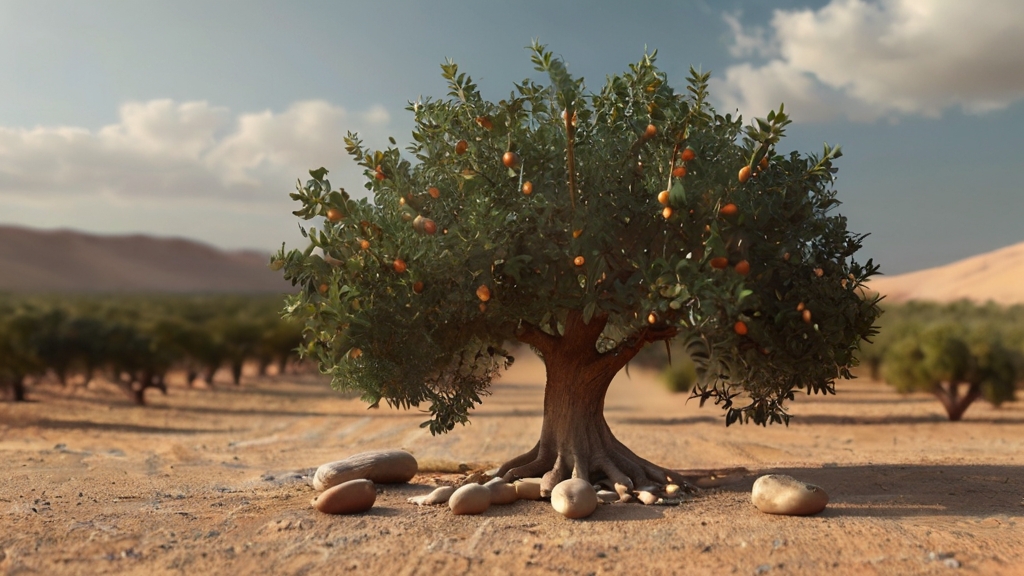
To effectively protect your argan trees against pests and diseases, it is crucial to regularly inspect the trees for any signs of infestation or illness. Pests and diseases can cause significant damage to your trees if left unchecked. Look out for leaf discoloration, unusual spots, or wilting, as these can be indications of a problem. It is important to take swift action to prevent further damage.
When it comes to protecting against pests and diseases, it is best to opt for natural and environmentally-friendly methods. Consider using natural predators or biological controls to manage pests instead of harsh chemicals that could harm the environment. These methods can help keep pests in check without causing harm to your trees or the surrounding ecosystem.
In the event that you do find pests or diseases on your argan trees, it is essential to remove and destroy any infected or infested plant parts. This will help prevent the spread of diseases to other trees and limit the damage caused by pests.
Additionally, implementing proper irrigation and drainage practices can help minimize the conditions that are conducive to disease development. Avoid overwatering your trees, as excessive moisture can create an environment where diseases thrive. Ensure that your trees have adequate drainage to prevent waterlogged soil.
For specific guidance on pests and diseases common to argan trees in your region, it is advisable to consult with local agricultural extension services or experts. They can provide valuable insight and recommendations to help you protect your trees effectively.
Frequently Asked Questions
How Do You Grow an Argan Tree?
To grow an argan tree, start by soaking the seeds in water for four days to aid in germination. Then, plant the seeds in 3-inch plastic pots, 2 inches deep in damp soil. Wait patiently for up to a month for germination. Once the seedlings have produced a pair of leaves, transplant them into 6-inch pots with a specific soil mixture. Remember to choose a location with well-draining soil and plenty of sunlight.
Can Argan Tree Grow Outside Morocco?
Yes, argan trees cannot grow outside of Morocco due to their desert adaptation. These trees have specific requirements for climate and soil, thriving in semi-arid regions with well-drained soil. They can tolerate high temperatures and resist drought, which are characteristics of their native habitat in Morocco. The unique environment of Morocco provides the necessary conditions for the successful growth and sustainability of argan trees. Therefore, it is not recommended to plant argan trees outside of Morocco.
How Tall Is Argania Spinosa?
The argan tree, also known as Argania Spinosa, stands tall like a mighty oak, reaching heights that rival the tallest trees in the forest. With an average height of 26-33 feet, this majestic tree commands attention and admiration. Its slow growth rate is a testament to its resilience and ability to thrive in arid and semi-arid climates. Planting an argan tree is like planting a symbol of strength and endurance, a living testament to the beauty of nature.
How Do Argan Trees Survive?
Argan trees survive in arid environments due to their deep root systems, high drought tolerance, and ability to grow in poor soil conditions. Their long taproots allow them to access underground water sources, ensuring their survival in dry regions. Additionally, these trees have adapted to withstand high temperatures and can thrive in semi-arid climates. These unique characteristics make argan trees well-suited to their native environment and enable them to thrive even in challenging soil conditions.
Related Articles
Argan Oil Production From Argania Spinosa
Kept under lock and key, the secrets of argan oil production from Argania spinosa reveal the hidden treasures of this legendary liquid gold.
Harvesting Argan for Organic Oil Production
Ponder the remarkable benefits and sustainable practices involved in harvesting argan for organic oil production, and discover the intriguing role of women and unique extraction methods.
Health Benefits of Pure Argan Oil
Jumpstart your health and discover the surprising benefits of pure argan oil, from glowing skin to potential cancer-fighting properties.


